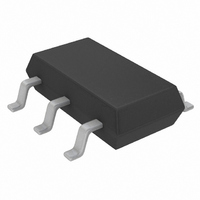LTC4400-1ES6#TR Linear Technology, LTC4400-1ES6#TR Datasheet - Page 9

LTC4400-1ES6#TR
Manufacturer Part Number
LTC4400-1ES6#TR
Description
IC RF POWER CONTROLLER TSOT23-6
Manufacturer
Linear Technology
Datasheet
1.LTC4400-2EMS8.pdf
(16 pages)
Specifications of LTC4400-1ES6#TR
Rf Type
Cellular, GSM, GPRS, PCS, Wireless Modem, TDMA
Frequency
300MHz ~ 2.7GHz
Features
Single Output
Package / Case
TSOT-23-6, TSOT-6
Lead Free Status / RoHS Status
Contains lead / RoHS non-compliant
Other names
LTC4400-1ES6TR
LTC44001ES6TR
LTC44001ES6TR
Available stocks
Company
Part Number
Manufacturer
Quantity
Price
APPLICATIO S I FOR ATIO
Demo Board
The LTC4400-X demo board is available upon request. The
demo board has a 900MHz and an 1800MHz RF channel
controlled by the LTC4400-X. Timing signals for SHDN are
generated on the board using a 13MHz crystal reference.
The PCTL power control pin is driven by a 10-bit DAC and
the DAC profile can be loaded via a serial port. The serial
port data is stored in a flash memory which is capable of
storing eight ramp profiles. The board is supplied preloaded
with four GSM power profiles and four DCS power profiles
covering the entire power range. External timing signals
can be used in place of the internal crystal controlled
timing. A variety of RF power amplifiers as well as ramp
generation software are available.
LTC4400-X Control Loop Stability
The LTC4400-X provides a stable control loop for several
RF power amplifier models from different manufacturers
over a wide range of frequencies, output power levels and
V
can improve or degrade loop frequency stability.
SHDN
SWR
–10
–20
–30
–40
–50
–60
–70
–80
10
0
conditions. However, there are several factors that
100mV
START
CODE
–28
START
PULSE
Figure 1. LTC4400-X Ramp Timing
12 s, ALLOWS TIME FOR DAC
AND AUTOZERO TO SETTLE
–18
U
–10
0
U
TIME ( s)
W
543
553
561
U
571
CODE
ZERO
4400 F01
1) The additional voltage gain supplied by the RF power
amplifier increases the loop gain raising poles normally
below the 0dB axis. The extra voltage gain can vary
significantly over input/output power ranges, frequency,
power supply, temperature and manufacturer. RF power
amplifier gain control transfer functions are often not
available and must be generated by the user. Loop oscil-
lations are most likely to occur in the midpower range
where the external voltage gain associated with the RF
power amplifier typically peaks. It is useful to measure the
oscillation or ringing frequency to determine whether it
corresponds to the expected loop bandwidth and thus is
due to high gain bandwidth.
2) Loop voltage losses supplied by the RF feedback
coupler will improve phase margin. The larger the loss, the
more stable the loop will become. However, larger losses
reduce the RF signal to the LTC4400-X and detector
performance may be degraded at low power levels. (See
RF Detector Characteristics.)
3) Additional poles within the loop due to filtering or the
turn-on response of the RF power amplifier can degrade
the phase margin if these pole frequencies are near the
effective loop bandwidth frequency. Generally loops using
RF power amplifiers with fast turn-on times have more
phase margin. Extra filtering below 16MHz should never
be placed within the control loop, as this will only degrade
phase margin.
4) Control loop instability can also be due to open-loop
issues. RF power amplifiers should first be characterized
in an open-loop configuration to ensure self oscillation is
not present. Self-oscillation is often related to poor power
supply decoupling, ground loops, coupling due to poor
layout and extreme V
quency is generally in the 100kHz to 10MHz range. Power
supply related oscillation suppression requires large value
ceramic decoupling capacitors placed close to the RF
power amp supply pins. The range of decoupling capacitor
values is typically 1nF to 3.3 F.
5) Poor layout techniques associated with the RF coupling
components may result in high frequency signals bypass-
ing the coupler. This could result in stability problems due
to the reduction in the coupler loss.
LTC4400-1/LTC4400-2
SWR
conditions. The oscillation fre-
sn4400 4400fas
9















